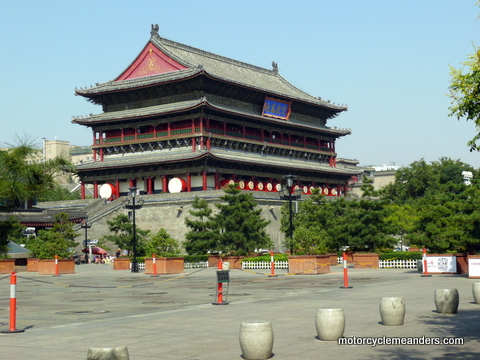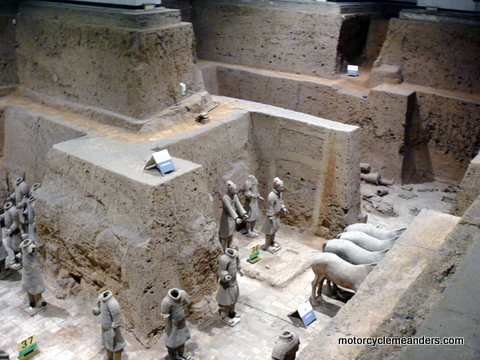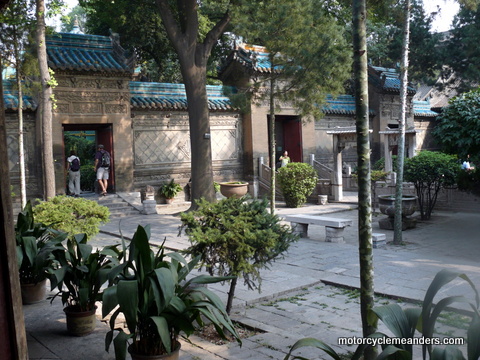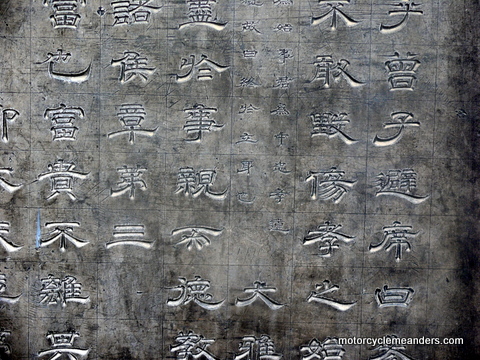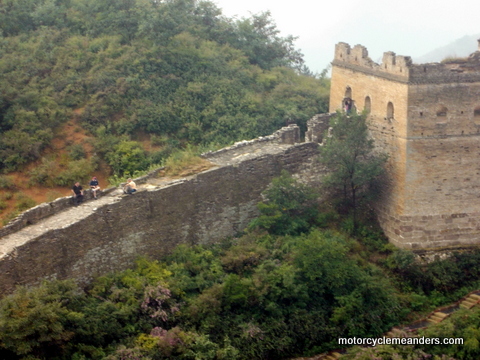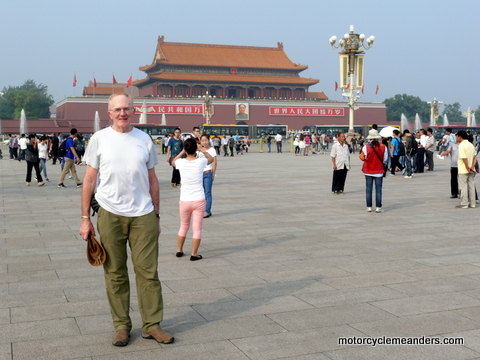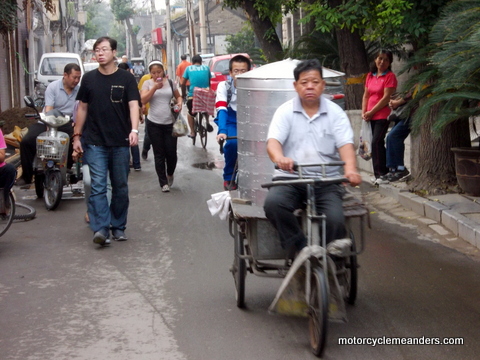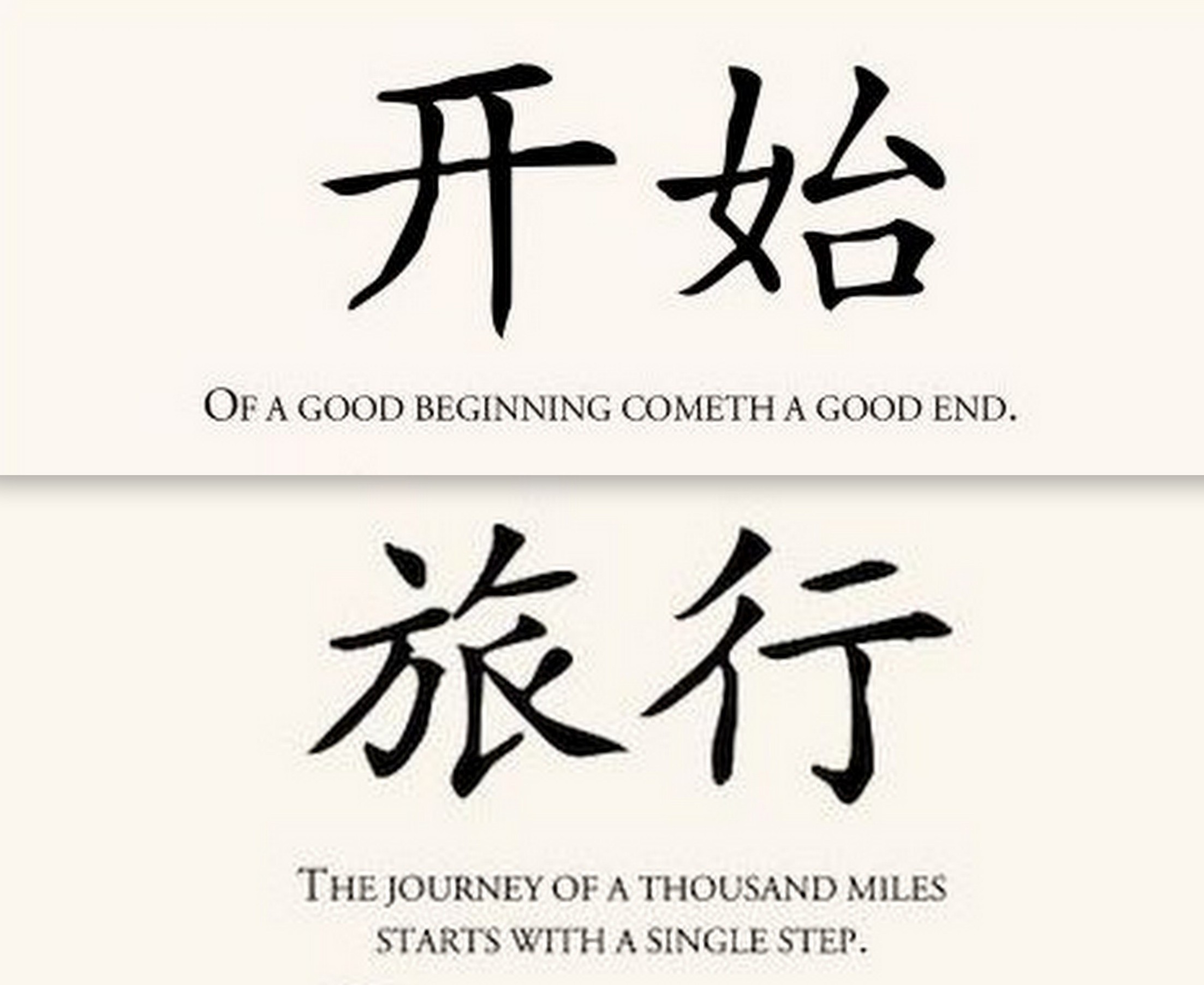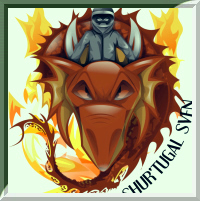
 |
|
5-22 September 2013
This trip came about as an “add-on” to my motorcycle tour across Tibet. Rather than simply ride from Lhasa, the capital of Tibet, to Kathmandu in Nepal, why not spend time exploring other parts of China, culminating in taking the pressurised train on its 48-hour journey from Beijing to Lhasa to commence the bike tour? Four of us, friends from two previous motorcycle trips, had signed up to do the Tibet ride; then decided to add visits to Shanghai, Xi’an and Beijing to it before further adding Chongqing and the Three Gorges, with the climax being the train trip to Lhasa. We had met on and returned from our 2010-11 Nepal and Bhutan tour with Bhutan Thangkas of the Four Harmonious Friends (pictured). So that seemed an appropriate moniker for us.
It all worked okay. The lost experiences were the Beijing-to-Lhasa train journey and a few extra days sightseeing in Lhasa, both of which had been anticipated as special highlights of our trip. And we ended up spending a few more days than we would have preferred in Kathmandu. Not that that was such a problem. But we’d all been there before and had factored in some extra days there in any event. The bottom line, however, was that we four harmonious friends had two very enjoyable and eminently satisfying trips: one exploring “mainland” China for almost three weeks; and one visiting Tibet and riding across the Tibetan Plateau from Lhasa to Kathmandu. This page deals with the “mainland” China segment. The Tibet tour is under Meanders Abroad. Guide to China Tour I prepared a rough guide ahead of the trip. It touches on all the sights I identified as wanting to see. You can find it here. Chongqing First stop on the “mainland’ china tour was Chongqing (pron something like chung-ching).
Late afternoon saw us cart our luggage in the rain from the hostel up the stairs to the road above to flag down a couple of taxis to get us to our ship for our Yangtze River cruise. With some small drama, we found the designated pier at the waterfront area and boarded the Victoria Grace for our cruise. First impressions of the Yangtze River up close were amazement at the rate of the current. Rain upstream had obviously flooded into tributaries and set a feverish rush through the city of Chongqing. All the “piers” were floating pontoons – essential to cope with the perennial changes of river level. There was more stumbling across the several gangplanks joining pontoons than dignified walking to board the Victoria Grace. Sailing time was 9.00pm. Yangtze River Feng Du
The odd thing was the serenity of the surrounds compared to the rush of the river and the bobbing of boat, docks and gangplanks the previous evening. As if suddenly, there was no discernible current. During the night, presumably not too long out of Chongqing, we had entered the upper reaches of the Three Gorges Dam; and had progressed beyond the flow of the feeder river into the calm of the wider reservoir.
The rest of the time this day was spent cruising past lower-lying land along the river, rising quickly into hills and beyond into mountains. Small villages and clusters of houses seemed to nestle into the lush growth, which almost haphazardly exhibited signs of farming – mostly subsistence it seemed. But there wasn’t much activity to be seen. This was now a world that had been upended and displaced by the rising water of the Three Gorges Dam. Villages, farms and farm houses had disappeared under the dam; and new villages and farm houses had been built on higher land. Farmers and their families had moved into the new houses clustered together to replace their cottages previously dispersed over the farm lands. It seemed there was less farm land to cultivate given the rougher terrain shortly beyond the water’s edge, but living standards for farmers might well have risen in terms of living comforts. White Emperor City
The town has a history of being a “poet’s city” and has often been a refuge for warlords because of its readily defensible location just upstream from the fast-flowing entrance to Qutang Gorge, known as the “Throat of Sichuan.” Overlooking the entrance to Qutang Gorge is the “White Emperor City.” It’s now located on an island created by the rising water of the Three Gorges Dam and commands a strategic position as a permanent watchtower over the gorge entrance. It got its name from some petty official of the Han Dynasty who declared himself “White Emperor” but is best known for its association with hero emperor Liu Bei who set up his own kingdom of Shu Han during the Three Kingdoms period of China (220-280AD). It gets complicated; but Lui Bei has become somewhat romanticised perhaps beyond historical accuracy. He also played a major role in a famous battle of the time recently portrayed in the movie Red Cliff. The White Emperor City has statues of heroes from the Three Kingdoms period as well as examples of the hanging coffins of the ancient Ba people – a tradition of placing coffins in totally inaccessible locations high up in fissures of cliffs. Historians still dispute how they were placed there. The Three Gorges
The remnants of a fortress sat on the upper cliffs at the entrance to the Qutang Gorge as if providing a flash-back to the defences that would have proved vital to blocking invading armies from using the gorge to reach the upper reaches of the Yangtze River. Qutang Gorge is the shortest of the gorges but is said to be the most spectacular. Aboard the ship, it was a matter of just taking the spectacle in as the ship slowly made its quiet way through the gorge. While lots of mist and cloud might have detracted from picture postcard photos, they created an eeriness that is often seen in Chinese hangings and paintings of mountains, suggesting that such scenes have a long tradition in China.
Just at the end of Wu Gorge is a small, narrow tributary of the Yangtze River called Shennong Stream, which rises north of the river on Mt Shennong. This was another excursion off the Victoria Grace.
Shennong Stream certainly added a whole new perspective to the beauty of the terrain of the smaller gorges that made up this tributary. There did seem to be a third gorge on the Yangtze River before we reached the Three Gorges Dam and went through the locks to get us to the bottom of the dam, but the real third of the Three Gorges, Xiling Gorge, is actually below the dam. It was the last part of the voyage before disembarking at Yichang. The Three Gorges Dam is a mighty feat of engineering. There are five stages of locks, with separate channels and locks for traffic going upstream and traffic coming downstream. The locks could take 2-3 of the Yangtze River Cruise ships at a time. Because of the low water levels, which change dramatically depending on the season, we ended up having only to use three of the five levels of locks. Next morning (we went through the locks during the night), we disembarked and had a tour of the dam site before reboarding and completing our voyage of the Three Gorges. Shanghai
Booking accommodation on the Internet can be a gamble, as we discovered in Chongqing. In Shanghai, we hit a jackpot. The Astor House Hotel was a charming, 1920s establishment of considerable grandeur. Its location, a couple of minutes’ walk from the Bund, added to its attraction. The Bund got its name from some ancient word meaning an embankment. It’s essentially the road along the Huang Pu River running through Shanghai, with a recently added wide promenade and its signature variety of world renowned architecture of its 1920s and 1930s buildings.
At the south end of the Bund is the old walled city of Shanghai. There aren’t any of the ancient walls left, but the Nanshi district, as it’s called, reflects its past through a myriad of narrow laneways, the several hundred years old Yu Yuang Garden (a walled labyrinth of trees, shrubs and rock and water features, built and enjoyed by Ming emperors and their successors), and its representations of old Chinese life. There were also lots of shops, roadside stalls and eateries. There was a time in the latter part of the 1800s and into the 1900s when Nanshi was the home to most of the Chinese population, while the growing foreign population occupied their “concessions” in other parts of the city. The former French Concession is still regarded as a tourist attraction in itself because of its lay-out, architecture and ‘Frenchesque’ ambience.
T Finally, a visit to the Shanghai Museum was a must – and a very worthwhile one. It houses an impressive collection of Chinese art, calligraphy, furniture, ceramics, sculpture, imperial seals and money – all dating back to very early dynasties. A busy three days ended at Shanghai Station to catch the overnight train to Xi’an. Four of us managed the tight fit into our 4-berth compartment with luggage somewhat precariously bulging from space above the carriage’s corridor. After a few of our duty-free drinks, we lost interest in seeking out the dining car and slept well. Xi’an
The location was within the ancient city walls and right on the edge of the bustling, full-of-life Muslim Quarter, taking its name from the settlement there of Arab and Persian traders who plied the Silk Road from centuries past. Xi’an was the eastern terminus of the Silk Road. It’s where the caravans arrived from and departed for the West. The Muslim Quarter is a maze of narrow lanes lined unendingly with stalls and shops selling any and everything, especially an amazing range of street food predominantly unique to the Arab and Persian heritage of the area. At night, the streets and lanes are a spectacle of lights, glitter and party people.
The nearby Bell Tower was built in 1384 and marked the centre of the city, the four axis roads emanating from it towards the four compass-point city gates. Over the years, the city centre changed so in 1582 the tower was moved a kilometre to the east. However, apart from the base, the rest is original from the Ming Dynasty. We caught a concert of sorts demonstrating the art of bell music. A night walk through the Muslim Quarter was fun and got repeated each night. We enjoyed dinners at local restaurants in the quarter with accompanying beers. Terracotta Warriors
This, in fact, was my second visit to Xi’an. The first was a quick over-nighter on an official trip to China from Moscow when posted there on ‘Her Majesty’s Diplomatic Service.’ That was 1975! My only recollection is visiting the Huaqing Hot Springs and being told about the “Xi’an Incident” which took place there. This was the house arrest of Chiang Kai-shek by one of his generals, a former war lord from Manchuria. The “incident” forced Chiang Kai-shek to form a united front with the Communists to oppose the Japanese invasion. Close by the springs, I do recall a large mound being pointed out as the site of some archaeological discoveries relating to the first emperor of China that had been recently made; and were starting to be excavated. I don’t think anyone at that time had any real idea of what would be revealed as the excavations proceeded. The revelations were, of course, what we now know as the terracotta warriors.
The pits are numbered 1, 2 and 3 on the basis of the order in which they were excavated. There are other potential pits yet to be dug as modern technology has located a lot more archaeological finds. Even the tomb of the emperor himself remains untouched, but a lot is already known of its layout from sonar and X-rays. The Terracotta Warriors Museum consists of huge buildings that have been constructed over the three pits, with extensions on one of them (Pit 2) to house exhibitions of warriors found intact, weapons from the pits and two restored sets of chariots and horses found near the emperor’s tomb. P Pit No 3, which we visited after Pit No 1 because of its locality, is deeper but much smaller than Pit 1; and seems to have a guard of honour for a general about to proceed to his chariot. It seemingly represents some sort of command post.
On the trip back into town we dropped by the Big Wild Goose Pagoda, considered one of the most famous Buddhist pagodas in China. It dates from the Tang Dynasty (618-907) and was built to house Buddhist scriptures brought to China along the Silk Road from many countries along the way by a Chinese Buddhist adventurer-monk, who then translated them into Chinese. Nothing is kept in the pagoda itself now because of earthquake damage and a lean it has acquired from shifting ground water. There are some impressive displays in many of the buildings making up the complex around the pagoda. It was full-on day, but a richly rewarding one, again finishing in a local Muslim Quarter restaurant.
Ancient City Wall C Our task for the day was to circumvent the 13.7km wall along its street-wide thoroughfare at the top of the wall, presumably designed for easy movement of soldiers and weaponry around the wall. Cycling along the top of the wall is almost de rigueur for a tourism experience of the wall. And that’s what we did.
The outer side of the main wall is crenulated for easy shooting. Along the walls, at every 120m, are “ramparts’ – protrusions from the main wall that allow archers to fire along the wall to supplement firing from the main wall, thus providing defensive shooting from two directions all along the wall. (You’ve probably gleaned that the range of accurate arrow shooting is about 60m.) There are also several towers of various categories: smaller ones on some ramparts for accommodation of soldiers and more elaborate Gate Towers adjacent to each of the main gates. T Cycling around the top of the wall was a great way to imbibe the spectacle and the nostalgia of its place and role in the history of Xi’an, which, after all, was the capital for more dynasties than any other city in China, starting from the first emperor in the third century BC; hence the location of the terracotta warriors here. Walking back from the South Gate, where we started and finished our ride, we again made our way through the labyrinth of the Muslim Quarter; only this time ventured deeper into the maze to visit the Great Mosque, a sprawling walled “oasis” within the tightly packed shops, houses and laneways of the Quarter. The mosque was first built in 742AD during the Tang Dynasty (the Silk Road can be traced back to the early centuries BC). It was restored and extended during several subsequent dynasties. It consists of several courtyards and pavilions, as well as the main prayer room. Pagodas By now, two of us took a needed rest day; while, with a companion, I headed off to see the last two sights I had identified in preparation for our stay in Xi’an: the Small Wild Goose Pagoda and the Forest of Steles. We walked to the latter, which was close to the Southern Gate of the city wall, picking up a make-shift breakfast in the Muslim Quarter as we passed through.
A little like the Great Mosque and the Little Goose Pagoda, which we visited next, the Forest of Steles museum has the same oasis feeling of an expansive walled area of gardens and pavilions surrounded outside by densely packed housing and tiny alleyways.
The Small Wild Goose Pagoda is similarly impressive in its shape and size as the Big Wild Goose Pagoda we visited two days ago. It dates back to the 8th century (Tang Dynasty) and started life with 15 storeys but lost a few with earthquakes over the centuries. Its surrounding pavilions are a museum of cultural and historical treasures of Xi’an and other neighbouring areas. As with other such places visited, it becomes overwhelming to be faced with so many creations of history (metal fabrications of all sorts, sculptures, paintings, drawings, ceramics (developed into the unique Chinese product of porcelain) and calligraphy.
The vast majority of tours of the Great Wall take their clients to the Badaling section of the Great Wall, which is closer to Beijing and near the Ming Tombs. Mutianyu, while increasing in popularity as a tourist destination, is more remote and less frequented. That was its attraction for me. Jingshanling is even more remote again (it was about 130km back to Beijing) and a lot less frequented. A lot of the Wall there is still largely as it has been for centuries, in contrast to the other sections which have been extensively restored. Jingshanlin Section became a must-visit from very early in my preparations. The train trip from Xi’an to Beijing at eleven hours was three hours shorter than from Shanghai. By 8:00am, we were on the road to the Ming Tombs. Ming Tombs
I certainly would not join the detractors of a visit to the Ming Tombs even though only the so-called Sacred Way and three of the thirteen tombs are open to the public. The tombs are spread over a long, wide valley protected on three sides by mountains. Up the middle of the valley is the Sacred Way – an avenue of large, stone animals of various species, archways and towers. Some several kilometres further past the Sacred Way is the Changling Tomb – that of the third Ming emperor, Zhu Di, who was the first of the Ming emperors to be buried in the valley. All twelve of the succeeding Ming Emperors were buried here more or less stretching out in a fan shape over several square kilometres from the Changling Tomb. (Zhu Di was the emperor who built the Forbidden City and moved the capital to Beijing.)
The Changling Tomb, apart from being the original tomb in the valley, is said to be the largest and best preserved. The description of it as Zhu Di’s tomb I found a bit misleading. His tomb, as such, is still buried in a walled mound at the rear of several ornate pavilions and tower. It’s only the latter that are visitable; not the tomb itself. The large buildings that constitute the Changling Tomb for tourism purposes are certainly ornate and impressive, with an excellent exhibition in the main hall of the feats and accomplishments of Zhu Di and displays of many of the treasures excavated from the actual tomb.
Mutianyu Great Wall As implied above, it was a long ride to Mutianyu, including some side tracks around road works that raised doubts as to whether we were still on a road. But we got there.
The most startling impression from the wall was seeing it wind along the top of high, steeply sided, narrow ridges, with almost perpendicular drops down both sides from the very edges of the wall’s foundations. It was almost unbelievable that an invading force could even get to the top of the ridges, wall or no wall. It was beyond imagination that such a substantial structure could be built in such an inaccessible location. It was a place that made one simply stand and ponder unfathomably how and why. It was special to walk as one struggled to fathom; and have so few tourists hinder your walk or disturb your thoughts. Jingshanling Great Wall The next phase of our venture was a long, eventually dark drive into the wilderness. There’s not very much at the Jingshanling Section by way of tourist accommodation facilities: a small hotel, restaurant, a few “farm stays”. I couldn’t even contact the hotel directly or through an agent. I had to get a friend of a friend in Beijing to ring them! With considerable misgivings on the part of the driver and a phone call to the hotel from a pitch black, forest road, we finally made our destination; and they did have rooms for us in one of their cottages.
We woke to rain and a forecast of two days of rain. So it was breakfast first. With light rain still falling, we discovered a cable car to take us to the top. It was obvious from the hesitation of the staff that we were its first customers of the day. There was only one car ahead of us carrying two staff members with the car door open so they could alight to open our door on arrival! Even from the top cable car station, we were faced with a narrow, dirt track through thick scrub that wound its way further upwards to a final steel ladder to reach the high watch tower of the Jingshanling Section of the Great Wall. Already, the approach signalled that Jingshanling was to offer something entirely different from Mutianyu or Badaling.
The first impression of Jingshanling was an infinitely stretching wall in both directions that snaked and dipped and reared and twisted along ridge lines that disappeared into the mist. It was a most awe-inspiring and incomprehensible vista. The fact that in the mist the camera could not begin to do justice to what was before our eyes in no way detracted from the amazement of this magnificent phenomenon. The advice of a random guide we briefly met on the way to the cable car was to go right from the watch tower for a while and then double back and go left for a longer distance. His rationale was that a lot more restoration had been undertaken to the right of the watch tower, while to the left there had been very little restoration – and eventually none. We barely ventured onto the wall right of the tower before heading left for more than an hour. Almost immediately we encountered the wall as almost unimaginably different from what we had experienced at Mutianyu or what we had expected. The ridges, while as narrow with sides as steep as we experienced as Mutianyu , were far more erratic in their pitching and rising, slithering and meandering into the invisibility of the mist.
I couldn’t help but feel that if one hadn’t experienced Jingshanling, one really hadn’t experienced the true immensity of the Great Wall of China. It was a magical morning. In fact, the experience of Jingshanling was such that I have made a short slide show of its highlights. You can access it here. Soon after midday, we set out for Beijing, the trip taking a couple of hours. It wasn’t an easy task for the driver to find our obscurely located hotel. As it turned out, with the sight-unseenesss of booking hotels on the Internet, we struck another jackpot. The Hotel was called “161 Hotel”. That’s because its street number is 161. It wasn’t so much a street as a hutong: 161 Lishi Hutong. This raises a raft of issues relating to hutongs in Beijing. It’s a story in itself (see below). Imperial Beijing
The old city walls of Beijing have disappeared. The last remaining sections were demolished in the 1950s as part of the construction of Tiananmen Square and its broad avenues as the centrepiece of the new People’s Republic of China.
All this is what I would regard as “Imperial Beijing”. O
An easy, enjoyable and informative way to take a trip into the Forbidden City and, at the same time, gain an appreciation of imperial life, if only – but importantly – relating to the end of the Qing (pron Ching)and last imperial dynasty is to watch the Bertolucci movie The Last Emperor.
Mao Zedong’s Mausoleum is a dominant feature towards the southern end of the square, while the sides of the square are flanked by the People’s Hall and the National Museum. Two of us spent about 4 hours in the museum a couple of days later – a great treat, especially of ancient China leading up to the unification of the first emperor of Terracotta fame. At the southern end of the square are the Gate Tower and the Archery Tower. That was quite a day’s outing! National Museum of China
The National Museum flanks the Eastern side of Tiananmen Square. It’s an imposing and impressive building with a vast wealth of historic and cultural treasures. But it lacks several imperial treasures whose absence the Government of the PRC must weep about every day. Over centuries of imperial rule in China, the various dynasties had amassed a huge collection of treasures dating back to Neolithic times and encompassing every dynasty to the last emperor. These thousands of priceless artefacts were all housed and protected within the Forbidden City. They were, in effect, the property of the imperial dynasty of the day.
In 1925, soon after the expulsion of Pu Yi (the last emperor) from the Forbidden City, a national museum was founded within the Forbidden City to take charge of the imperial collection of antiquities. Soon after, Chiang Kai-shek’s Nationalist Government, in the face of Japan’s invasion of China, had the collection packed up and moved south to Shanghai and then Nanjing to protect it from the invading forces. From the early 1930s until Japan’s defeat at the end of the Second World War, the collection was moved several times to safe places away from Japanese forces until eventually being brought back to Nanjing in 1947. Then, with the civil war going against Chiang Kai-shek and his Nationalist forces and his decision to evacuate his forces to Taiwan, much of the collection, including several of its most precious artefacts, was shipped with him to Taiwan. Hence the imperial collection from the “Palace Museum” of the 1920s is split between “national” museums in China (Beijing) and Taiwan (Taipei).
With that snippet of history as background, one could barely begin to imagine how overwhelming a unified collection of the imperial collection would be. I once visited the Taipei museum on a “business” visit and have a lasting, if non-specific, recollection of being shirt-fronted, as it were, by the immensity and richness of its antiquities; as, indeed, I also was by the Beijing museum’s displays. One very large section of the latter which particularly fascinated me was the collection of artefacts from the earliest of times, most of which had been discovered and excavated after the PRC had come to power so were never part of the shared spoils. Former Legation Quarter
Its history goes back to the infamous opium wars of the 1860s and the equally infamous Treaty of Nanjing under which China was compelled to open the country for trade and grant all sorts of concessions to the foreign powers banging on the door. Those concessions included allowing them to set up shop in their own districts in various cities; and occupy and build legations, banks, trade offices, churches, hospitals, restaurants etc in a district set aside for foreigners in Beijing. The district was in a prime spot within the old city walls and alongside the Qianmen Gate (and abutting today’s Tiananmen Square). This is the former legation quarter. From vantage points within the quarter, it’s easy to see the Qianmen Gate and Beijing’s first railway station, which would have been just outside the walls close to the gate. It’s now a railway museum.
T
Some of the original buildings were destroyed in the siege, but many survived and others were built in the years after the siege. The quarter continued to house foreign legations and other foreign institutions until the founding of the PRC in 1949.
The Russian compound was also on this street. Interestingly, running off the street was a tiny lane which doesn’t appear on contemporary maps but it had its name etched into a brick wall: “USSR Embassy Compound Lane”, indicating that the former Russian Compound became the USSR Compound after the Bolshevik Revolution of 1917. I couldn’t tell exactly where the boundaries of the compound might have been, but it seemed certain that the wall along the lane would have been one of them. There also seemed to be a mix of old and new buildings in the compound area. An Orthodox Church roof could be seen behind the walls, the tell tale sign being its Orthodox Cross clearly visible. The former US compound fronting onto a parallel street would seem to have had a rear entrance onto Legation Street. It’s now located behind a modern wall and consists of four or five buildings housing various institutions and companies but still dominated by the former legation building itself, now one of Beijing’s classiest restaurants. It was fascinating to see so many elegant buildings of mixed architecture along what today are narrow lanes and in a quiet leafy district of the city. It was an interesting and pleasant walk through history. Our Hutong and Its Neighbourhood
In Beijing, hutongs are alleys formed by traditional courtyard residences. Many neighbourhoods were formed by joining one courtyard residence to another to form a hutong. Sometimes the term is used to refer to the neighbourhoods themselves. We were in a neighbourhood that has innumerable hutongs running between main roads and intertwining with one another in the blocks between the roads. Our hutong was Lishi Hutong. Lishi Hutong has a history dating from the Ming Dynasty. You might recall that it was the third Ming emperor that moved the imperial capital to Beijing and built the Forbidden City as his palace. Seemingly, he and his successors and their town planners were instrumental in constructing what now remains of old Beijing. One of those features are the hutongs, in both meanings of the word.
Many of Beijing’s hutongs have disappeared under the necessity of wider roads and high-rise apartments, but several hutong neighbourhoods have been preserved and undoubtedly will remain as legacies of a very unique tradition of Beijing life. Eating Out in Beijing
We had meals at any time of day and sometimes indistinguishable as to whether they were breakfast, lunch or dinner; like noodles and vegetables for an early morning meal or noodles and vegetables for a late afternoon meal. Generally, we had a multi-plated mix of fried or steamed treats that invariably made up a very delectable repast – equally invariably accompanied by local beers of high quality.
Then there were the occasions when we ate really out – like on the street. There was the quick and easy breakfast of a pancake omelette dished up by a lone, footpath vendor from his small wheel barrow. But there was also the permanent day and night food market on a particular street that we stumbled across on the way back from our ‘Imperial Beijing’ day. We later returned to it on our last night in Beijing. Its array of food waiting to be instantly cooked on purchase was as varied as it was enticing: seafood of all sorts, Peking Duck, skewered meats, vegetables, and an assortment of fruits and deserts. Then for the aficionados – although we noted this was as much a novelty to the Chinese as it was to us: a spread of such delicacies as scorpions, silk worms, snake and big black spiders!
There were a few other highlights in Beijing that I had earmarked for a visit. However, by the time I had covered the ground described above and taken in a few spontaneous sights, such as the Railway Museum housed in Beijing’s first railway station located right beside where the main city gate would have been, and a couple of unexpected pedestrian precincts, I reckoned I had done enough justice to Beijing’s attractions to warrant a last quiet day before catching the plane to Kathmandu. Slide Show |

